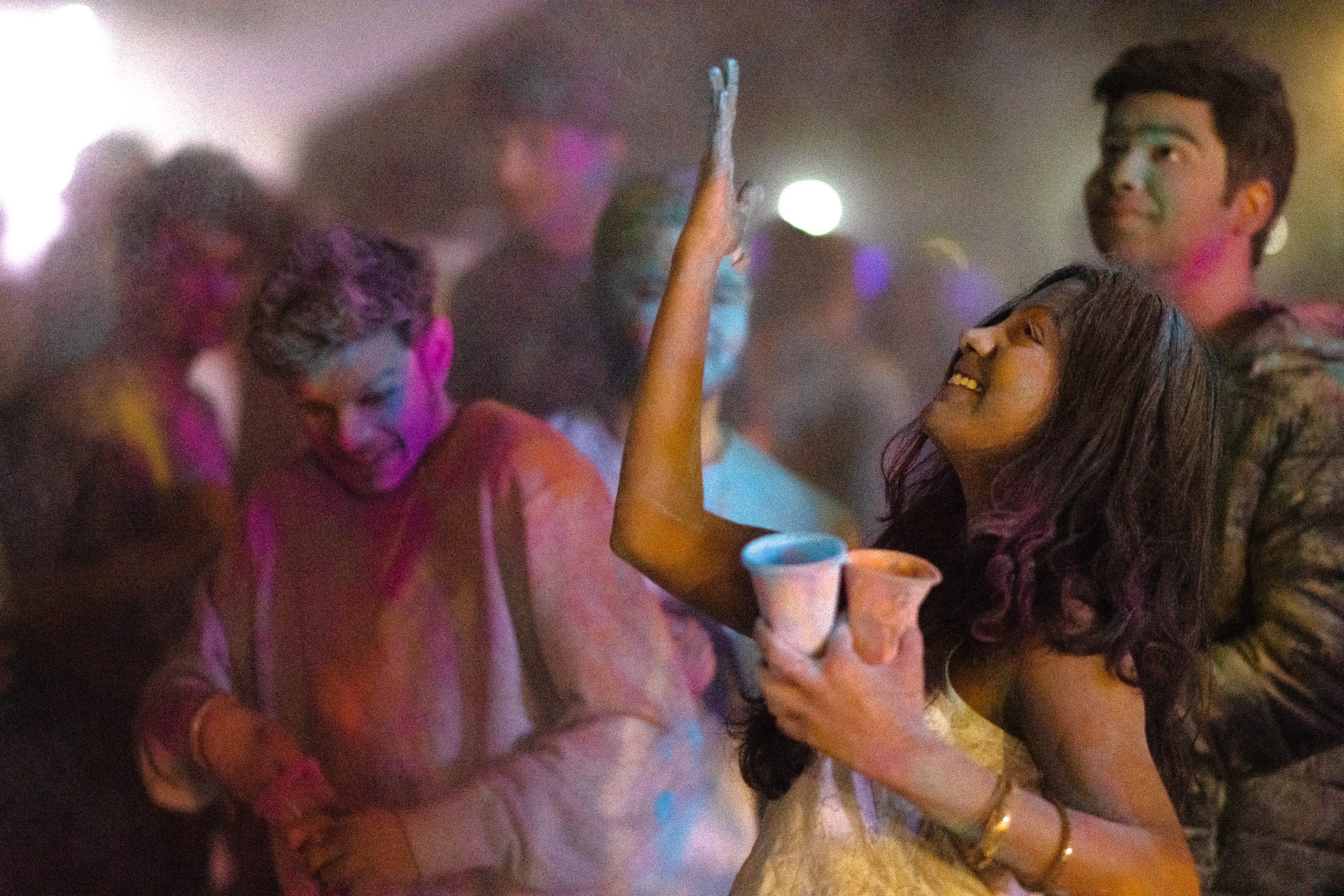Despite snow falling down on campus and a freezing cold breeze, at 6pm last Wednesday over three hundred people were gathered in a rather dark but music-filled Greg’s place, dancing in t-shirts and throwing paint at each other. Why you may ask? Well, it was Holi Festival, the Hindu festival of colour.
Holi Festival takes place on a different date each Spring in accordance with the Hindu calendar (which is tied to the lunar and solar cycles).
Vision attended the event and got the chance to speak to some of the people there, including Radhika, President of the University Hindu Society.

We asked her about why Hindus choose to celebrate Holi festival every year, and why throwing coloured paint is such an important part of the event.
She says, “Its significance to Hindus is all about how sacrifice can still be seen colourful.”
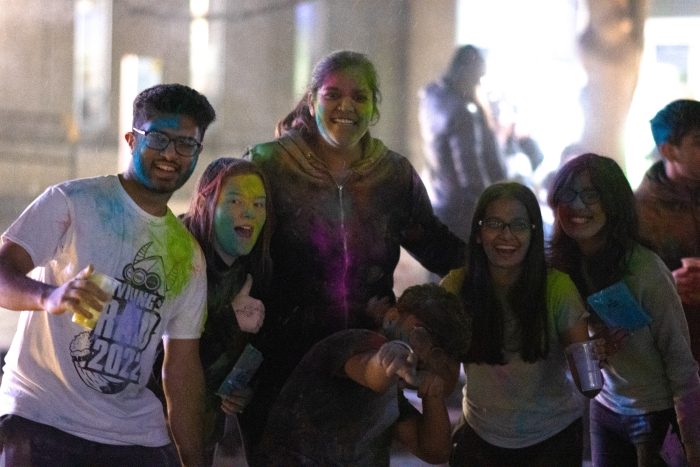
“You leave what happened last behind you and then just move forward.”
Rohan
Rohan, Social Secretary for the society also tells me, “It’s about the transition between winter to spring.”
“And it’s just [starting] over like a new season. And with every new season there is a new start. It’s sort of like you leave what happened last behind you and then just move forward.”
Vision also spoke to some of the other attendees, including Ravi, who is Sanskar Coordinator for the Hindu society.
“For me [Holi] is quite religious. It’s the celebration of Prahlad and his relationship with Vishnu, and the way that he was protected by the Gods when evil tried to triumph over good.”
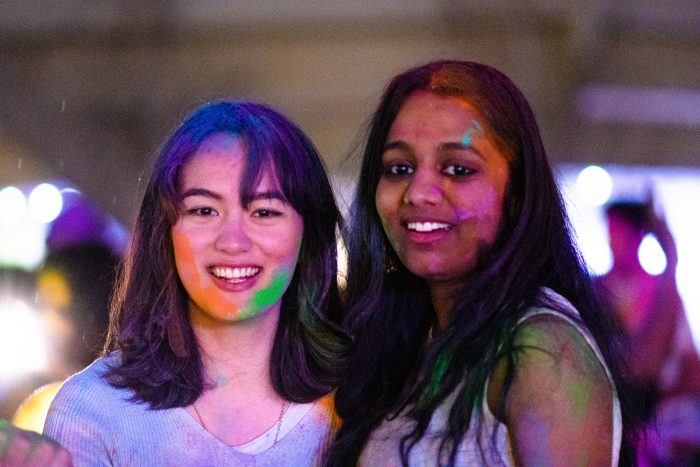
Holi celebrates the story of Prahlad and Vishnu. Prahlad, the son of evil king Hiranyakashipu, disobeys his father in worshipping the Hindu God Vishnu. His father, deeply offended, tries to kill him, but the God’s keep on protecting Prahlad. Eventually he has to get his sister to try kill Prahlad.
Holika tries to kill Prahlad by tricking him into walking into a fire, but he is saved by a special cloak that protects him. The god Vishnu then proceeds to kill Hiranyakashipu and restore justice. Because of this, fires are often lit to remind people of the story, and to celebrate good triumphing over evil, light triumphing over darkness. Many think that the word ‘Holi’, comes from the name of the evil King’s sister Holika, who died in the flames.
The colours at Holi Festival likely originate from another legend, the legend of Krishna. Krishna, who has blue skin, is desperate for the love of his life Radha, and wants to have fairer skin like her. He asks his mother what he should do, and she suggests him painting Radha’s face a different colour to make him feel better, so that is what he does. The light-heartedness of this practical joke, as well as the colourfulness and focus on love, seems to be partly why Holi is such a joyful festival.
“It’s about bridging relations.”
Holi is far more than just a colourful event. As these stories show, it has a deeper spiritual meaning.
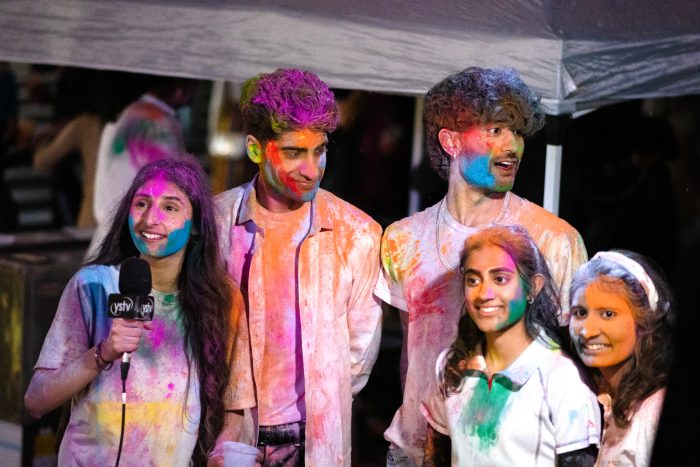
An international student we spoke to at the event explains it like this:
“Holi is not just about colours, you know, it’s about like bridging relations. Let’s say you have parted with your loved ones, Holi [is referred to] as the day of bridging relations or mending broken relations.”
He also explains that there is a strong sentiment during the festival where people have a general spirit of generosity and forgiveness.
“If anyone out of the blue like puts colour on you, you can’t say anything. You can’t say anything to him, because it’s Holi.”
He also tells me that to celebrate, another thing is involved in Holi,
“Water guns…and sometimes eggs and grease also.”
All in all, Holi is clearly a messy event, but one that is thoroughly enjoyed and much looked forward to throughout the year.
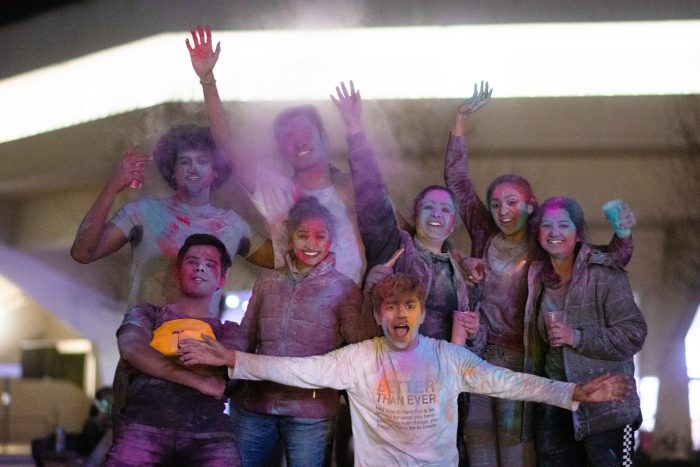
Asking if anyone had fond memories of previous years of Holi, Rohan told me that when he was a kid he went to India to celebrate the festival with his extended family.
“I had Holi there and it was absolutely massive…the whole road was covered in paint.”
Radhika tells Vision the Holi celebrations last year on campus helped her make friends and feel connected to the community here at York.
“My last memory was last year on campus, which kind of helped me bond with other people in the same culture and background as myself. As York [has] a very small society, especially of the South Asian community, this kind of helped bring everyone together.”
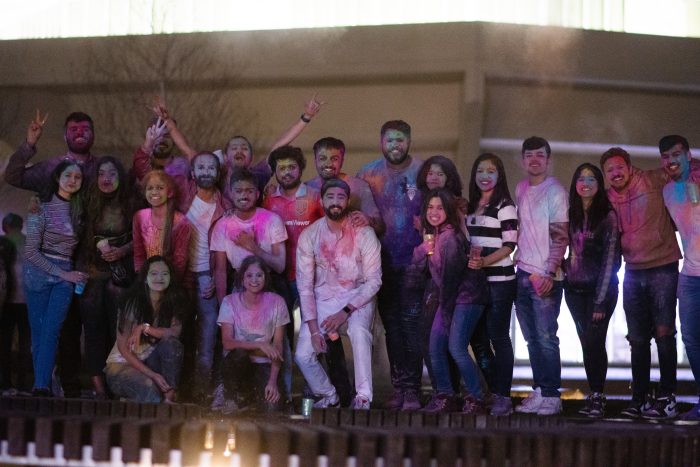
She also says the event helps to bring more than just Hindus together.
“I wanted a lot of people to see that our culture is not all about praying or not eating non-veg and all that, but [that] it’s actually fun as well.”
Radhika
“As you can see today, it’s not only the South Asian community, it’s communities from all over the world that have come to join us today, which is another big win for us because I wanted a lot of people to see that our culture is not all about praying or not eating non-veg and all that, but [that] it’s actually fun as well.”
Radhika, who was key in organising the event, took time to especially thank York University Student Union (YUSU) for funding the event.
“I couldn’t have done it without them.”
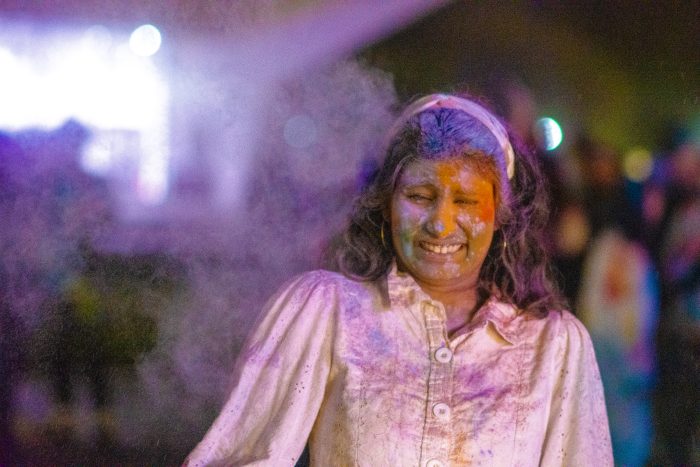
As well as throwing paint and celebrating in t-shirts on a snowy night, those who attended Holi celebrations on campus also got to drink Thandai, a drink made out of milk, cardamom, almonds and sugar.
Along with Thandai, a drink called Bhang is often consumed at Holi festivals around the world. Bhang is a drink made from the leaves of the cannabis plant.
Sweet foods are also typically eaten at the festival, including Gujiya – a deep-friend patty which is often filled with a sweet coconut filling.
In the spirit of Holi, I too got to try Thandai (not the stuff made of cannabis to be clear) and was also asked if I could have paint put on me; an offer I very happily accepted.
Thanks to Radhika, York’s Hindu Society and everyone who contributed to this article, as well as Abhishek Alex for the great photos.
